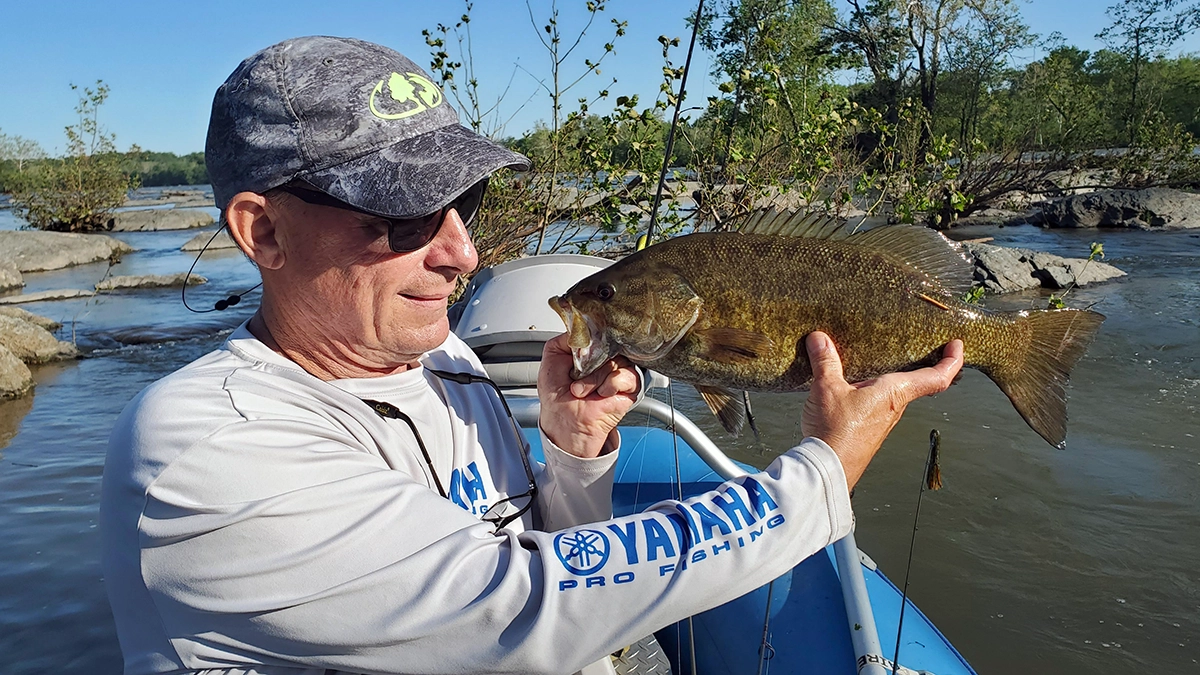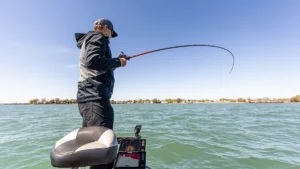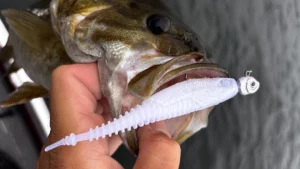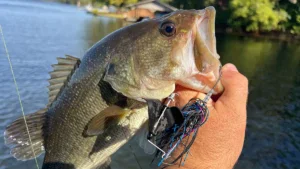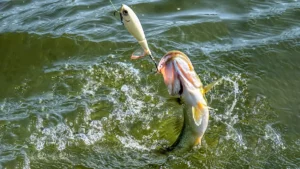If you’ve caught a “black bass,” the fact is you might have caught any of 17 species of fish. “Black bass” refers to a group of fish which aren’t true bass but are part of the sunfish family (Centrarchidae), the micropterids (genus Micropterus).
But how can you distinguish one from another? How can you tell for sure which species of black bass you just caught?
Fact is: Often, you can’t — at least not easily or reliably without a keen eye and knowledge, often requiring meristic counts (counts of physical features that offer clues to a species’ identify such as spines or rays in fins, the number of gill rakers or scales along the lateral line, and so on).
Unfortunately, that which is easily observed, such as a fish’s coloration, isn’t always a reliable indicator. It’s not like a male cardinal, easily defined as a bright-red crested songbird, end of story. With black bass generally, we’re talking about fairly deep-bodied fish with large mouths that are generally green to brownish in color. That describes most species which are also characterized by considerable variation in hues and patterns from fish to fish.
Although most species of black bass offer anglers no single, readily apparent magic-bullet characteristic, an awareness of specific indicators noted in the comments below can at least help narrow down the possibilities. One such indicator is the length of the maxilla — the jaw that extends back along the upper side of the mouth. How far back that extends, relative to the eye just above it, when the mouth is closed can be revealing.
In the face of few such conspicuous clues, another critical factor in identifying a species of bass can be geography — where it was caught. Some species (such as largemouth and Florida bass), are found nearly everywhere in North America. But many are very limited in range (though some have been introduced far and wide) and knowing that range can mean knowing what species of micropterid you’ve caught.
Yet one more I.D. indicator can be the size. That’s not much help in smaller individuals but when larger, it’s worth noting that some bass species seldom grow beyond a couple of pounds.
Below is a list of some notable species of Micropterus that fishermen catch in the U.S. with comments on their range and appearance.
Alabama Bass (Micropterus henshalli)
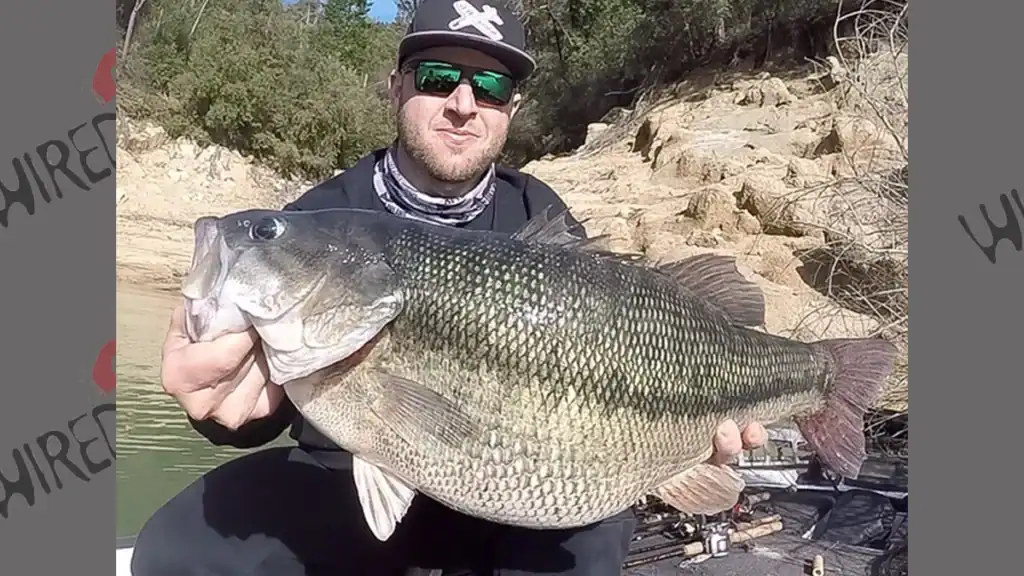
- Jaw extends nearly to the rear of the eye. Distinct lateral blotches are visible along the entire side but not as bold as on very similar spotted bass.
- Found in lakes and rivers in the Southeastern U.S.; also introduced in some Texas and California waters.
- Common to a pound or two, the Alabama can grow larger: The IGFA world record is 11 pounds, 4 ounces, from New Bullards Bar Reservoir, California.
- In some areas where it’s not native, M. henshalli is considered invasive because of its quick growth and aggressive behavior, out-competing other bass species. That aggressive predation and ability to easily hybridize has been problematic in some waters (see discussion under spotted bass, below).
Florida Bass (Micropterus salmoides), Largemouth Bass (Micropterus nigricans)
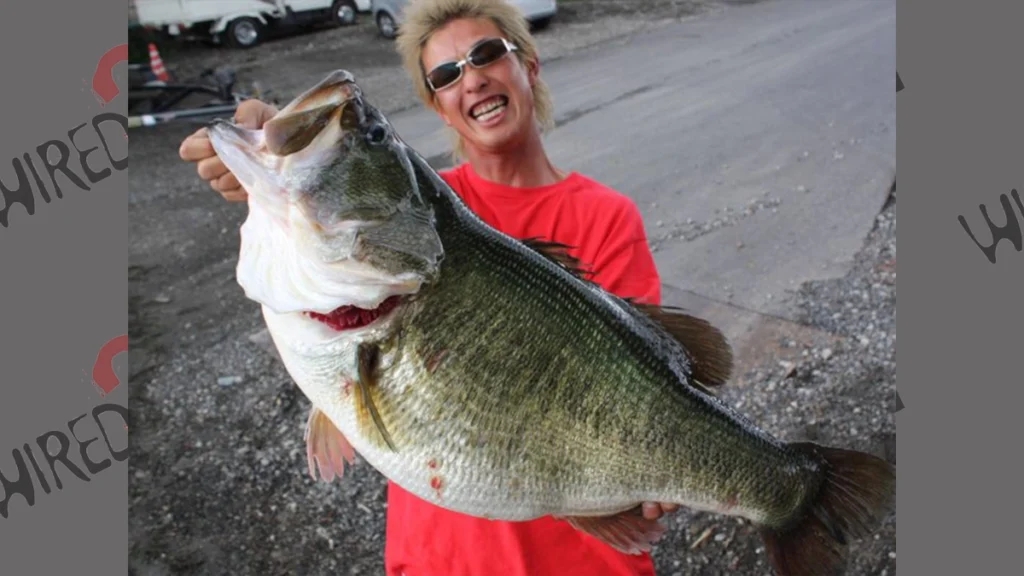
Until 2024, the Florida bass wasn’t recognized as a species. That year, science proved the Florida bass and largemouth bass, identical in appearance to most eyes, to be different species. Both are characterized by an upper jaw that extends back past the rear margin of the eye — hence the term “largemouth.” Both have nine dorsal spines (other species of black bass often have 10 dorsal spines) and while in many other species the two dorsal fins appear to be a single fin, in the Florida and largemouth, the first and second dorsal are separated by a deep notch that extends nearly down to the fish’s back. While coloration varies, both species tend to be a dark olive or brownish green on the upper sides and lighter to white on the belly. Dark, blotchy markings along the side may be distinct or mostly absent.
While the jaw can help distinguish these two species from other types of bass, figuring out for certain if you’ve caught M. salmoides or M. nigricans can be nearly impossible without genetic analysis. That is what the IGFA relied upon to confirm I.D. of the Florida bass for world-record status.
The genetic range of Florida bass includes — of course — all of Florida as well as much of Georgia and the Carolinas, and the species has been introduced in Virginia and Nevada. Largemouth bass, originally found in eastern North America, are today found in every state and in many countries around the world. Florida bass also show up in other countries (note the world record described below.) The genes of M. salmoides have shown up in bass in many areas, including Texas and California. Further obfuscating the difference, the two species easily interbreed leading to hybridization, with fishes carrying genetic traits of both species.
The all-tackle-record Florida bass weighed 22 pounds, 4 ounces, from Lake Biwa in Japan (2009). The record largemouth weighed identically 22 pounds, 4 ounces, from Montgomery Lake in Georgia (famously in 1932).
Guadalupe Bass (Micropterus treculii)
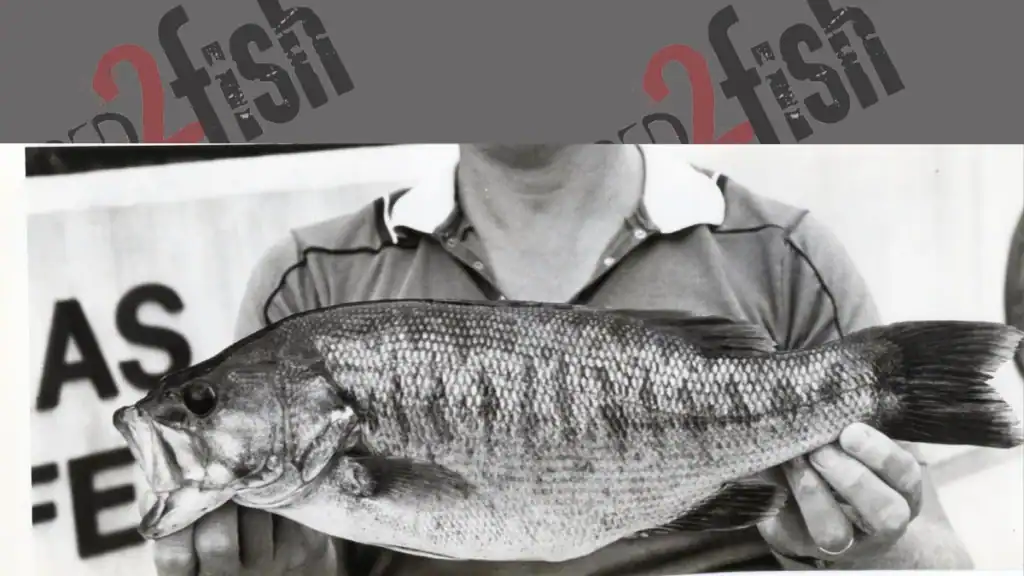
- The upper jaw extends no farther back than the middle of the eye. Dark blotches along the sides are often but not always distinct, not touching.
- Per their name, M. treculii is indeed native to the Guadalupe River basin and certain other river systems in Texas’ Hill Country. It prefers smaller waters with some current.
- Commonly a pound or a bit more, Guadalupe bass never get really large: The IGFA record is 3 pounds, 11 ounces, from Lake Travis in Texas (1983).
In the past 15 or so years, state and federal officials have worked to protect this unique species — from habitat degradation and from hybridization with smallmouth, which threatens the integrity of the species.
Redeye Bass (Micropterus coosae)
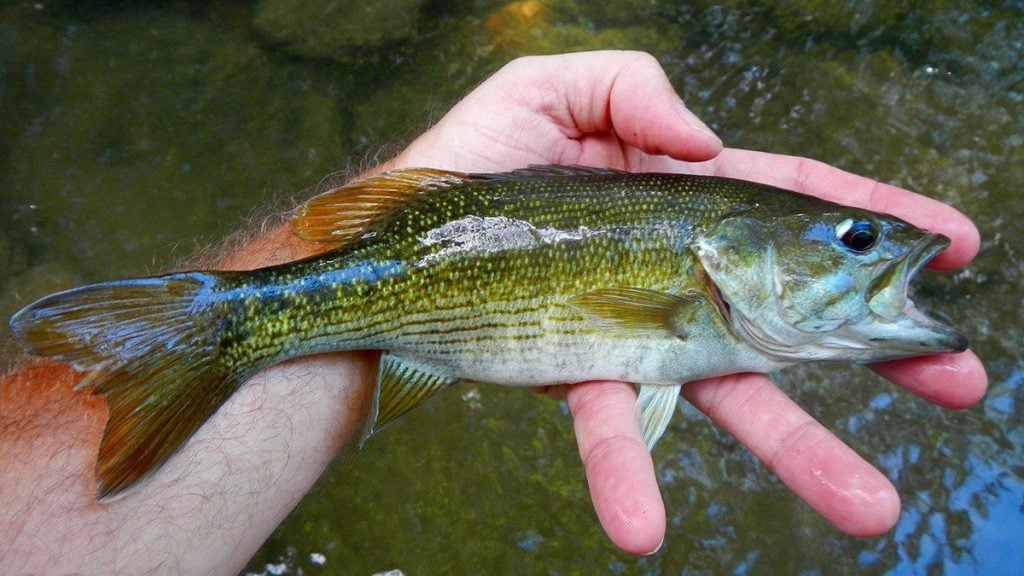
- The upper jaw may extend to the back of the eye but not beyond. The eye may be bright red, per the name, but not reliably. Ditto with fins and tail which can be distinctly reddish, but often are not.
- The redeye prefers streams with moving water in South Carolina, Georgia, Alabama and north Florida (and introduced in Tennessee and a few rivers in California).
- The species is one of the smaller micropterids; anything over a couple pounds could be considered a trophy, though the redeye may reach at least 5 pounds per a South Carolina record. (No IGFA world record for M. coosae has been established.)
- Redeye are easily confused with shoal bass found in the same waters in Georgia and Alabama. The redeye easily hybridizes with smallmouth.
Shoal Bass (Micropterus cataractae)
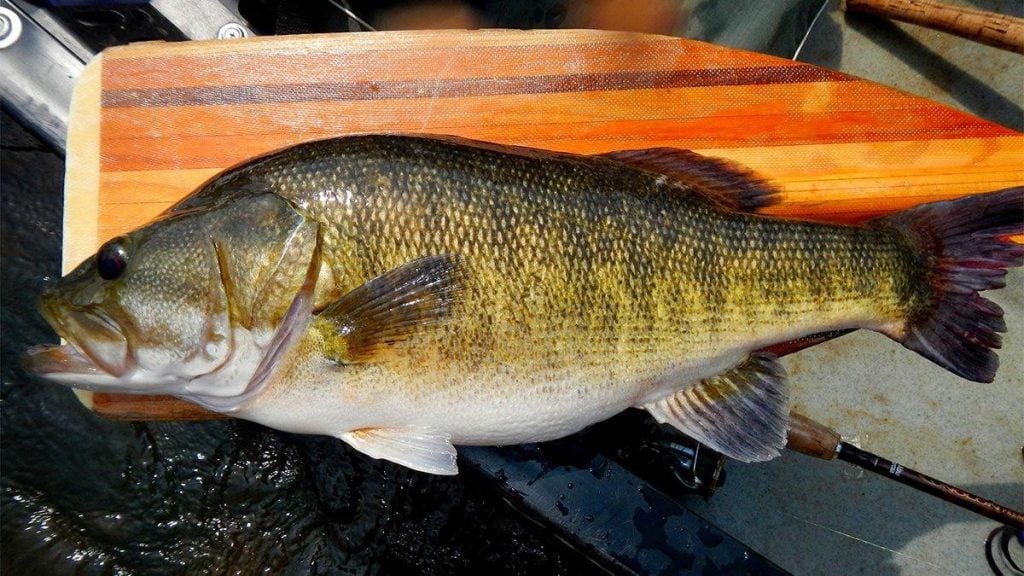
- As with the redeye, the upper jaw does not extend beyond the rear of the eye. Green to (sometimes very dark) brown sides often sport distinct dark bars spaced well apart covering the entire side, front to back and top almost to the belly. The shoal bass may exhibit a dark area or spot ahead of the tail.
- The shoal bass is among the more limited-range species of Micropterus, found mainly in western Georgia and slightly into eastern Alabama and Florida’s Panhandle. True to its name, it prefers to patrol water flowing over rocky shoals, notably in the Flint, Chattahoochee and Apalachicola river systems, among others.
- Anglers catch M. cataractae mostly in the one- to four-pound range, though they can grow larger; shoal bass weighing 8 pounds, 5 ounces, have been caught in Georgia. In 1995, the Apalachicola River in Florida gave up the standing IGFA world record of 8 pounds, 12 ounces.
In some areas, biologists have noted severe declines in shoal bass populations such as Florida’s Chipola River, where since 2019, a rule requiring release of any shoal bass has been in effect.
Smallmouth Bass (Micropterus dolomieu)
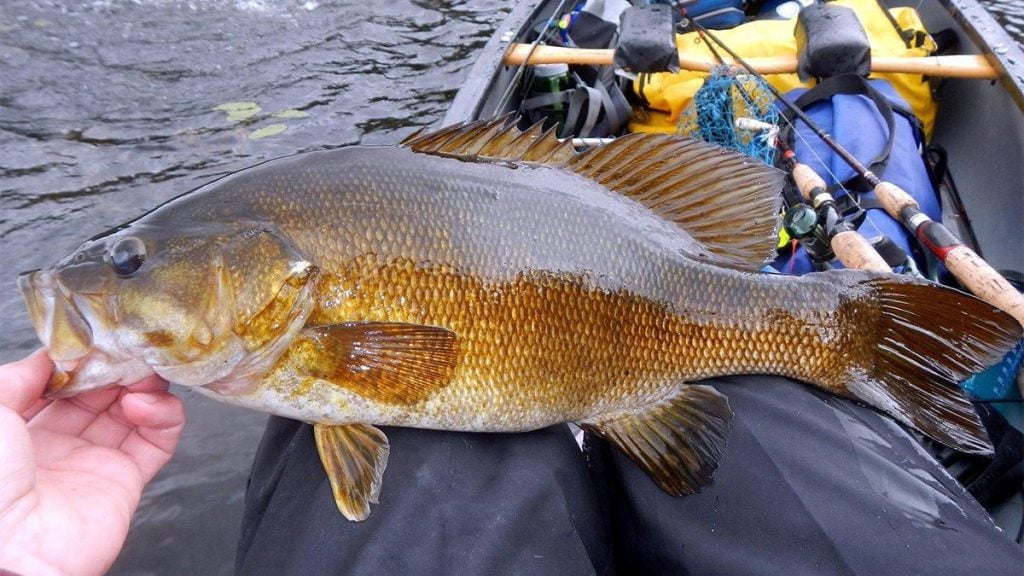
- Unlike largemouth or Florida bass, the maxilla (upper jaw) does not extend past the eye.
- Smallies often sport stripes that radiate back from the mouth and eye across the gill plates and vertical bars along the sides. Their coloration tends to be more bronze than green.
- Although not as widespread as largemouth, M. dolomieu occurs naturally in cooler waters in the eastern part of North America (most waters in the deep South are too warm). They have been introduced widely so they’re now found in 43 states and in Africa, Asia, Europe and South America.
- They prefer clear, cool water over rocky shoals in lakes, often in depths beyond those preferred by largemouth, and gravel bottoms in rivers.
- Typical size varies depending upon the waters, but two- to five-pounders are common. Only the largemouth and Florida bass grow larger; the IGFA world record has stood since 1955, when an 11-pound, 15-ounce trophy was taken from Dale Hollow Lake in Tennessee.
Smallmouth bass have earned a reputation as one of the hardest fighting micropterids, with hard runs and high jumps — like a largemouth but, many anglers would maintain an even stronger fight.
Spotted Bass (Micropterus punctulatus)
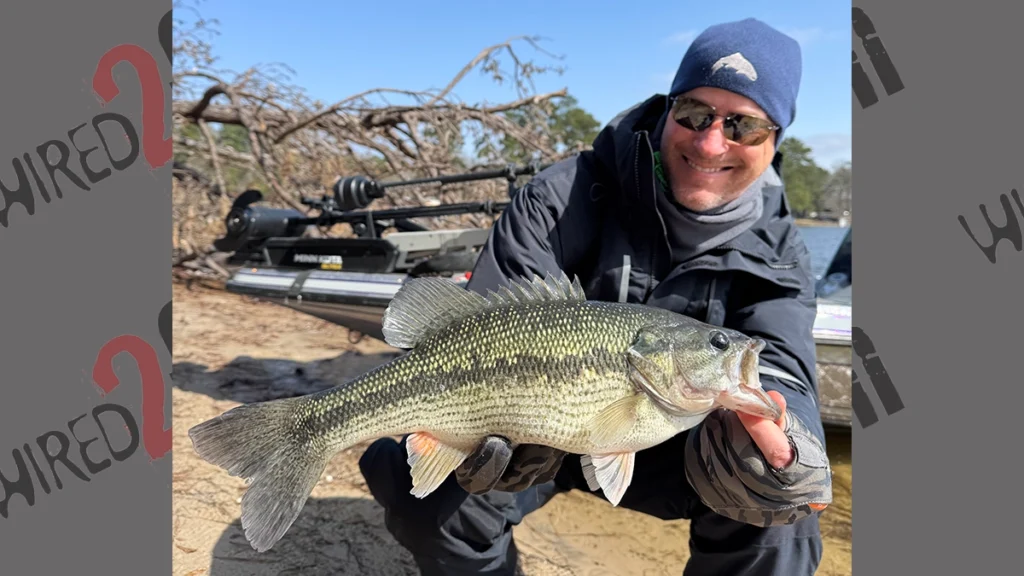
- Maxilla extends back to the rear of the eye but not beyond. Running down the middle of each side is a row of prominent blotches. Unlike most other black basses, the spotted has a rectangular tooth patch on its tongue (a dark area mid-tongue that feels like sandpaper). M. punctulatus’ two dorsal fins lack the deep V that separates these fins on largemouth and Florida bass. The spotted bass is virtually identical to the Alabama bass.
- The species was originally limited to the Mississippi River basin and adjacent states south of Ohio; today it has been introduced in many southwestern, mountain and western states. Spotted bass inhabit clear, slow-moving streams and rivers as well as deeper water of lakes and reservoirs.
- In terms of size, spotted bass mirror smallmouth, common to a few pounds but likely capable of reaching double digits. (For more explanation, see below.)
As with most micropterids, hybridization between spotted bass and other species is inevitable in many waters. Even without such hybridization, distinguishing spotted from the almost identical Alabama bass can be problematic and certainty can require genetic analysis. Alabama bass are so aggressive, that they tend to take over waters where they’re found; as a result, the IGFA has had to rescind spotted bass records from waters known to also harbor Alabama bass (such as California reservoirs which ostensibly produced 10 pounders), lacking genetic proof of species.
Suwannee Bass (Micropterus notius)

- The upper jaw extends to the rear of the eye.
- The species is notably deep-bodied. It exhibits dark blotches on the sides from dorsal surface to near the belly, but the coloration may be dark enough that the blotches (which may number 12 or so) are less evident.
- Spawning adults may exhibit turquoise coloration on head and belly.
- Per its name, look for this species in Florida and a bit of southern Georgia, in its native Suwannee River system as well as the Ochlocknee. It has been introduced into other rivers in northwestern Florida as well. The riverine species prefers fast-flowing streams, often spring-fed.
Given its habitat preference, it’s hardly surprising that M. notius is among the smaller micropterid basses, seldom over a pound or two. The IGFA record, caught in the Suwannee River in 1985, weighed 3 pounds, 14 ounces.
The Other Black Basses
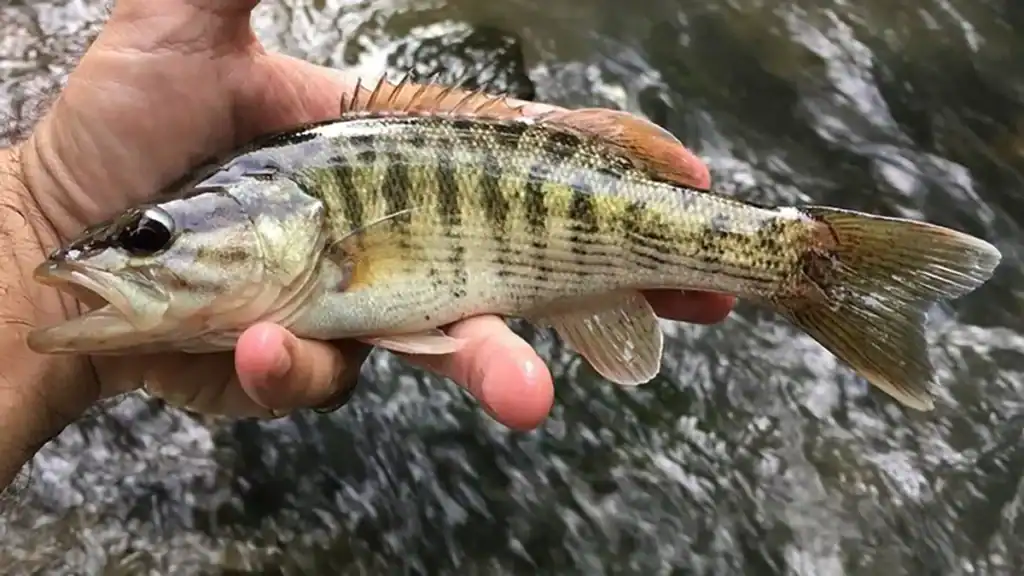
You may have been surprised to see that the list above was long enough to include nine different species. But wait: There’s more. At least eight more.
- Recognition of black basses (i.e. Micropterus species) has been in some turmoil in recent years. As I mentioned above, Florida bass — long considered a subspecies of the largemouth — is now a completely separate species.
- The spotted bass is so much like its aggressive cousin, the Alabama bass — which it readily hybridizes — that IGFA has had to rewrite the record book for spotted bass (which were likely in fact Alabama bass).
- Some species of Micropterus have been so threatened by hybridization, it could threaten them with extinction as a unique species.
These other species are admittedly obscure, often small and with very limited range, but are interesting variations within the large Micropterus clan. Significantly all of these are included in the 17 species of black basses that are recognized by the authoritative American Fisheries Society as separate species.
- M. boops – Altamaha bass (Altamaha River basis, Georgia)
- M. cahabae – Cahaba bass (only in Cahaba River system in Alabama)
- M. chattahoochae – Chattahoochee bass (Chattahoochee River basin, Georgia)
- M. haiaka – Choctaw bass (coastal river systems of the Florida Panhandle and adjacent Alabama)
- M. pucpuggy – Bartram’s bass (rivers, lakes of Georgia and South Carolina)
- M. tallapoosae – Tallapoosa bass (Tallapoosa River basin in Georgia and Alabama)
- M. velox – Neosho smallmouth bass (Ozarks, Missouri and Arkansas, and into Kansas)
- M. warriorensis – warrior bass (Black Warrior River basin in Alabama)
The “True” Bass Species

One might postulate that none of the black bass clan — largemouth, Florida, smallmouth and the rest — are bass at all. In fact, they’re all sunfishes. That is, the entire genus Micropterus is part of the family Centrarchidae, the sunfishes. Then, there’s also the European seabass (Dicentrarchus labrax) and the Japanese sea bass (Lateolabrax japonicus), though the latter is not a true bass.
Where does that leave bass such as the striper or white bass? They are members of the family Moronidae — not sunfishes but true basses, sometimes called temperate bass species. Rather than 17 species in North America, there are just four. Also, there can be hybrids of these species, such as the “wiper,” a cross between a female white bass and male striped bass.
- White perch (Morone americana) — Inhabits fresh, brackish and coastal waters along the Atlantic coast from Canada to Georgia. Transplanted to Great Lakes and large river systems of central U.S. World record: 3 ½ pounds (Massachusetts, 2016).
- White bass (M. chrysops) — Has a wider distribution than white perch but less coastal; in freshwater lakes and rivers, at times into brackish water, in the Great Lakes and Mississippi drainages and west to the Rio Grande and widely transplanted elsewhere. World record: 6 pounds, 13 ounces (Louisiana, 2010).
- Yellow bass (M. mississippiensis) — Distribution similar to white bass but more limited and, except for Arizona, not widely transplanted elsewhere. World record: 2 pounds, 9 ounces. Still pending at press time, 4 pounds, 5 ounces (Indiana, 2023).
- Striped bass (M. saxitilis) — Native to the North American East Coast from Canada into the Gulf of America (historically the Gulf of Mexico); widely introduced through stocking programs in lakes and reservoirs in more than 35 states including the West. World record: 81 pounds, 14 ounces (Connecticut, 2011).
